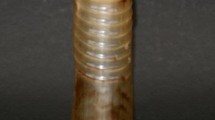Abstract
The recommendation that condoms be used to limit the transmission of AIDS has resulted in their increased utilization. One major brand of non-lubricated condoms was demonstrated to be coated withLycopodium clavatum spores, a product of known hazardous nature. Used previously in the manufacture of diverse products including hair powder, suppositories, and surgical gloves, these spores have caused allergic reactions ranging from hay-fever to more serious giant cell granulomas. This foreign-body response can simulate neoplastic disease, tuberculosis, or syphilis. Physicians should take note of the possibility that granulomatous masses on areas of the body that come in contact with condoms could be traced to these spores. These granulomas are non-lethal, do not lead to cancer, and are easily remedied; this is a relatively minor health problem compared to AIDS, a lethal, sexually acquired disease that might be contracted through sexual activity unprotected by condoms.
Zusammenfassung
L’utilisation des Spores LycopodiumDans La Fabrication des Préservatifs Provoquant des Problèmes de Santé. Le conseil d’utiliser le préservatif afin de limiter la transmission du SIDA, s’est traduit par une augmentation de leur emploi. Une des principales marques de préservatifs-lubrifiés a démontré que cux-ci deuvraient être enduits par les spores deLycopodium clavatum, un produit originaire de notre nature reconnue comme dangereuse. Utilisés auparauant, dans la fabrication de multiples produits tels que la poudre pour cheveux, les suppositoires et les gants chirurgicaux, ces spores ont provoqué des réactions allergiques á un degré, s’échelonnant: de la Fievre des foins vers de plus énormes et sérieuses cellules granulomas. Cette réaction au contact d’un corps étranger peut feindre soit une maladie néoplastique, la tuberculose ou la syphilis. Les médecins deuvraient considérer, l’éventualité pour ces masses granulomatous présentes sur les régions du corps, qui se révèlent en contact avec les préservatifs, auraient pour origine ces spores. Les granulomas ne sont pas mortelles, ne sont pas cancérigènes, et se guérissent aisément; il s’agit d’un problème de santé relativement mineur comparé au SIDA, une maladie sexuelle et mortelle qui serait contractée à la suite d’une relation sexuelle non-protégée par le préservatif.
Similar content being viewed by others
Literature Cited
Anonymous. 1941. Items. Science 93(2413):10.
Antopol, W. 1933. Lycopodium granuloma. Its clinical and pathologic significance, together with a note on granuloma produced by talc. Arch. Path. 16:326–331.
—, and C. Robbins. 1937. Lycopodium granuloma resulting from the use of anal suppositories. J. Amer. Med. Assoc. 109:1192.
Balick, M. J., and J. M. Beitel. 1988.Lycopodium spores found in condom dusting agent. Nature 332(14 Apr):591.
Beitel, J. B. 1979. Clubmosses (Lycopodium) in North America. Fiddlehead Forum, Bull. Amer. Fern Soc. 6(5): 1–8.
Boyd, W. 1955. Pathology for the surgeon. W. B. Saunders Co., Philadelphia.
Erb, I. H. 1935. Lycopodium granuloma. Surg. Gyn. Obstet. 60:40–44.
Feldman, J. 1934. Industrial dermatoses. Med. Rec. 139:279–283.
Fitt, L. E., and E. M. Snyder. 1984. Photomicrographs of starches. Pages 675–689 in Whistler, R. L., J. N. Bemiller, and E. F. Paschall, eds., Starch: chemistry and technology. 2nd ed. Academic Press, New York.
Greenberg, L. A., and D. Lester. 1954. Handbook of cosmetic materials. Interscience Publishers, New York.
Lambright, G. L., and R. P. Albaugh. 1934. Perennial hay fever from lycopodium. A case report. J. Allergy 5:590–591.
Levine, J. 1986. The toughest virus of all. Time (3 Nov):76–78.
Reynolds, J. E. F., ed. 1982. Martindale. The extra pharmacopoeia. Pharmaceutical Press, London.
Salen, E. 1951. Lycopodium allergy. Acta Allergol. 4:308–319.
Tobias, N. 1932. Cosmetics. J. Missouri State Med. Assoc. 29:63–69.
Whitebread, C. 1941. Beware of “Lycopodium.” Amer. Fern J. 31(3): 100–102.
Wilce, J. H. 1972. Lycopod spores, I. General spore patterns and the generic segregates ofLycopodium. Amer. Fern J. 62(3):65–79.
Windholz, M., ed. 1983. Merck index. An encyclopedia of chemicals, drugs and biologicals. 10th ed. Merck and Co., Rahway, NJ.
Author information
Authors and Affiliations
Rights and permissions
About this article
Cite this article
Balick, M.J., Beitel, J.M. Lycopodium spores used in condom manufacture: Associated health hazards. Econ Bot 43, 373–377 (1989). https://doi.org/10.1007/BF02858733
Received:
Accepted:
Issue Date:
DOI: https://doi.org/10.1007/BF02858733




